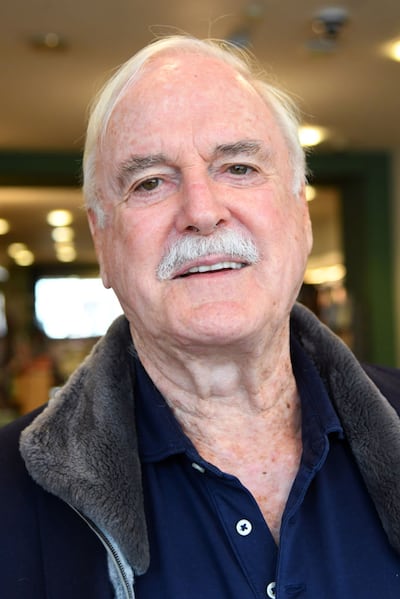In American Football, there is a common phrase that can be heard reverberating around locker rooms throughout this sacred season. I first heard these words when I was in the midst of teen drama series bliss. The year was 2011 and I was very much vibing Friday Night Lights. I’m quite aware that I was late to the party, but good things come to those who wait.
Seven words, a sporting mantra with universal US appeal: “We’re going all the way to state.”
This set me thinking about a similar place I aspire to reach on a regular basis. It is an integral part of the Perma model of wellbeing as devised by Prof Martin Seligman. Known as the father of positive psychology, Seligman highlights the importance of engagement. The feeling of fulfilment that is felt when we are engrossed in activities that are interesting and absorbing for us. The immense feeling of contentment where sense of self and time is suspended. The idyllic immersion that can only be felt in a five-star flow state.
How can we venture to the bucket list destination in the brain?
This is a more complex process that can be done in several ways with the added bonus of cultivating space to create. So, grab your helmets and get your game-face in place, we’re going all the way to flow state.
An effective game plan must feature actionable steps and I am going to share five here. Each one starts with the letter P, just to make it extra clear.
Peace

In John Cleese’s aptly titled Creativity: A Short and Cheerful Guide, he explores the many paths one can take to travel to flow state. He highlights the power of the unconscious mind, which enables us to function without much thought. While it guides us through daily life, we find it much harder to control what goes on inside our mind.
“That’s the problem with the unconscious, you can’t beat it around with a stick,” he says. “You have to coax it out in a number of crafty ways”.
In my own experience, there is only one way to start: meditate.
Cleese states: "The language of the unconscious is not verbal; it is the language of dreams." In his book Bliss Brain, Dawson Church discusses the power of gamma, which is the wave of insight and integration. The brains of meditating monks show an abundance of these brain waves. In this deep meditative state, you get downloads of things you could create.
I have frequently received a wave of insight, a projection slide that reveals an image when held against the light. When we take time to disconnect and reflect, we create space for the colour projector in our mind to come into effect.
Persistence
On May 12th, 1996, Séamus Heaney delivered a commencement speech for the graduates at The University of North Carolina. Rather than provide a roadmap for the future, he encouraged his audience to make personal discoveries as opposed to following prescribed routes. He discussed the power of persistence and how it is an essential energy in our lives: “Getting started, keeping going, getting started again – in art and in life, it seems to me, this is the essential rhythm.”

In her book Big Magic: Creative Living Beyond Fear, Elizabeth Gilbert also promotes the importance of persistence. She references Heaney's approach to creating poetry. Gilbert cites Heaney's description of the aspiring poet as someone who is constantly lowering a bucket only half-way down a well, returning repeatedly with nothing but empty air.
However, after years of practice, the chain draws surprisingly tight. “You have dipped into waters that continue to entice you back, you’ll have broken the pool on the skin of yourself.” Flow State is not a readily accessible place but if we continue to pursue it on a regular basis, we never know what awaits.
Proactive Behaviour
According to Cleese, the greatest threat to creativity is interruption. Therefore, it is vital to create boundaries of both time and space. Research has shown that, following an interruption, it can take eight minutes to return to your previous state of consciousness and up to twenty minutes to return to a state of deep focus.
Treat your time and your boundaries with great respect and remind yourself how this time is sacred for you. It’s just like meditation, it is likely that the first time you try it, a torrent of thoughts will come pouring in. Cleese suggests writing them on a sticky note and leaving them there. Acknowledge but don’t engage. The longer you sit there, the more your mind unwinds, and you can slowly settle into a flow state.
Positivity
Your thoughts follow your mood. Cleese describes how this came as a complete revelation to him when he first heard it decades ago. In his own words: “If we’re angry, we don’t want to play with the kittens – we want to plot our revenge.” In short, when we feel like we are submerged by negativity, we are wrestling against the flow. However, there is a way to inflate our artistic armbands so we can stay afloat.
In his book The Untethered Soul, Michael Singer describes the power of observing our thoughts rather than accepting them as part of us: "If you're willing to be objective, and watch all your thoughts, you will see that the vast majority of them have no relevance." Most of life will unfold in line with forces far outside your control, regardless of what your mind says about it. Manage your mindset and master your mood.
Patience
The final P is the fulcrum and foundation of this game-plan. In his book Hare Brain, Tortoise Mind, Guy Claxton discusses two different ways of thinking. The Tortoise Mind proceeds slowly, it is "more leisurely and dreamy". In this mode we are "ruminating or mulling things over, being contemplative or meditative".
Cleese concludes that the more patient, less deliberate modes of mind help to make sense of things and they are associated with what we call creativity or even “wisdom”. In short: pause, take heed, proceed.
From crochet to baking, writing to bricklaying, we all possess the innate ability to create. Tactics can change everything even when conditions might not feel right. With patience and persistence anything can happen, in life and under Friday night lights.










